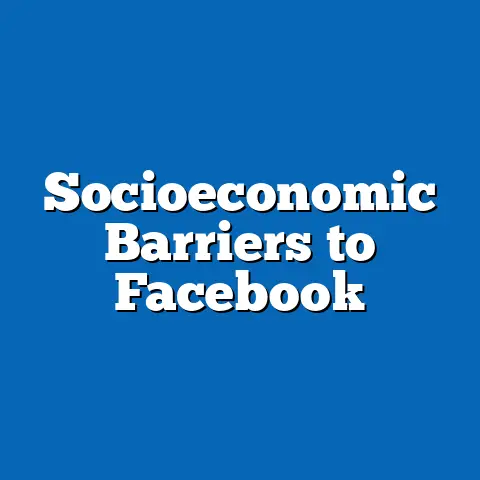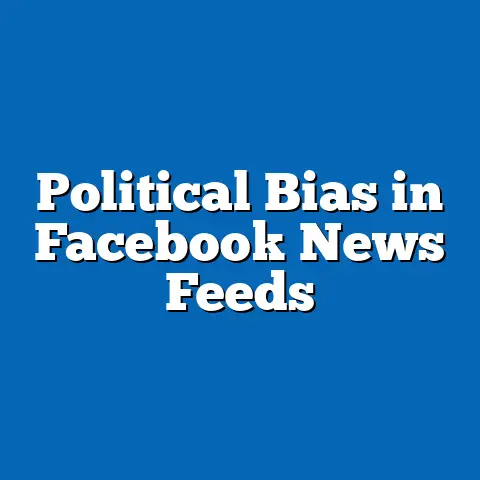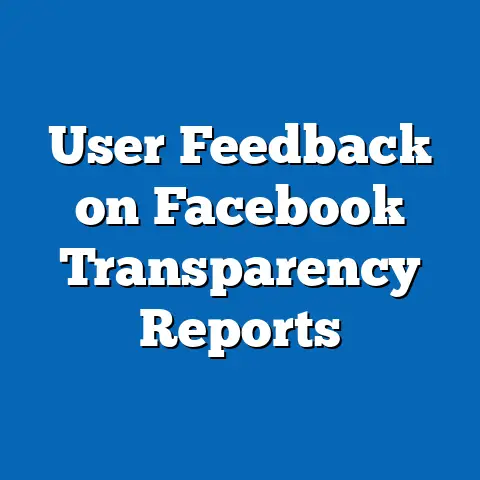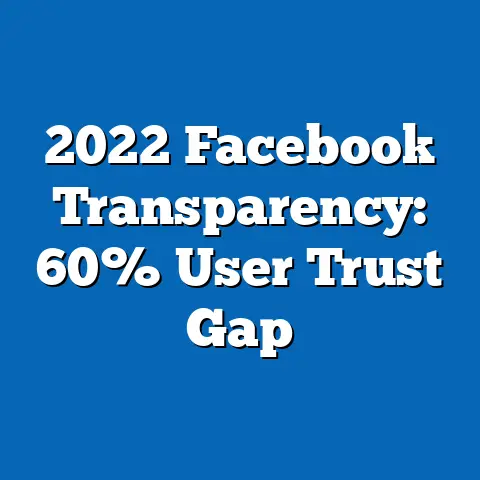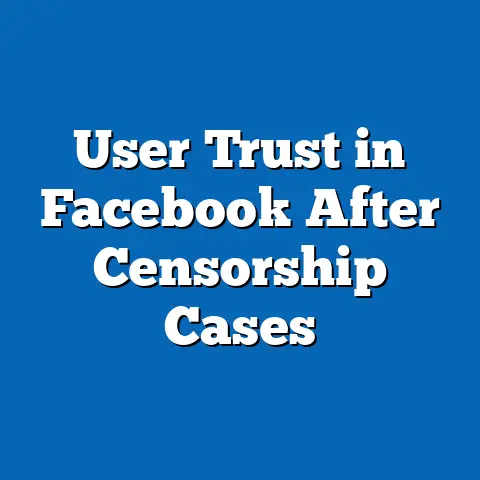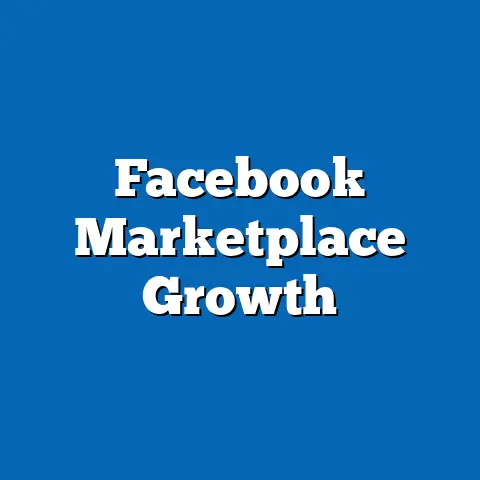Facebook Event Attendance in Iowa Cities
In recent years, a recurring complaint has emerged among event organizers, community leaders, and social media users in Iowa: declining attendance at local events advertised through platforms like Facebook. Many lament that despite the apparent ease of reaching wide audiences through digital tools, RSVP numbers often fail to translate into actual attendees, leaving organizers frustrated and events underattended. This phenomenon, often dubbed the “RSVP ghosting” trend, raises questions about the reliability of online engagement metrics and the deeper societal shifts influencing participation in community events.
This complaint is not merely anecdotal; it reflects broader changes in how individuals, particularly across different generations, interact with technology, prioritize social commitments, and engage with their local communities. Historically, community events in Iowa—ranging from county fairs to charity fundraisers—have been cornerstones of social cohesion, especially in smaller cities and rural areas. However, the rise of digital communication and shifting cultural norms have altered the landscape of event attendance, prompting a need to examine the intersection of technology, demographics, and local culture.
The societal implications of this trend are significant. Declining event attendance can weaken community bonds, reduce support for local initiatives, and challenge the economic viability of events that rely on participation for funding. Moreover, it signals a potential disconnect between online engagement and real-world action, a dynamic that may disproportionately affect certain age groups or socioeconomic demographics. This article seeks to unpack the complexities of Facebook event attendance in Iowa cities by analyzing generational patterns, demographic trends, and the technological, economic, and cultural factors at play.
Defining the Scope: Iowa’s Unique Demographic and Cultural Landscape
Iowa, often characterized as a predominantly rural state with a strong agricultural heritage, offers a unique lens through which to study event attendance trends. With a population of approximately 3.2 million as of 2023, the state is home to a mix of small towns, mid-sized cities like Des Moines and Cedar Rapids, and rural communities. These diverse settings shape how events are organized and attended, with urban areas often hosting more frequent and varied events compared to rural locales where gatherings may center on seasonal or traditional activities.
Iowa’s demographic composition also plays a critical role. According to the U.S. Census Bureau, the state has an aging population, with a median age of 38.5 years, slightly higher than the national average. Additionally, Iowa’s population is less racially diverse than many other states, with about 85% identifying as white, though urban centers show growing diversity. These factors, combined with a historically strong sense of community, provide a backdrop for understanding how different generations and demographic groups engage with events through platforms like Facebook.
The rise of social media as a primary tool for event promotion further complicates this landscape. Facebook, with over 2.9 billion monthly active users worldwide as of 2023, remains a dominant platform for event creation and RSVPs, especially among older demographics who may not use newer platforms like TikTok or Snapchat. However, the platform’s effectiveness in translating online interest into physical attendance varies widely, a trend that this analysis will explore in the context of Iowa’s cities.
Historical Context: Community Events and Technology in Iowa
To fully grasp the current dynamics of event attendance, it is essential to consider the historical role of community gatherings in Iowa. For much of the 20th century, events such as county fairs, church socials, and local festivals were central to social life, particularly in rural areas. These gatherings provided opportunities for connection in geographically dispersed communities, often serving as annual highlights that drew large crowds regardless of formal promotion.
However, this digital transition also introduced new challenges. While online tools made it easier to gauge interest through clicks and “going” responses, they also created a culture of noncommittal engagement, where indicating interest online does not necessarily equate to showing up. This historical shift from in-person to digital interaction sets the stage for analyzing current attendance trends in Iowa cities, particularly through the lens of generational behaviors and preferences.
Generational Analysis: How Age Cohorts Engage with Facebook Events
Generational differences are a critical factor in understanding Facebook event attendance patterns. Each generation—defined by shared historical experiences and cultural touchpoints—interacts with technology and community events in distinct ways. Below, we explore the characteristics of key generations and their engagement with Facebook events in Iowa, drawing on both qualitative insights and available data.
Baby Boomers (Born 1946-1964)
Baby Boomers, who make up a significant portion of Iowa’s aging population, tend to value traditional forms of community engagement. Many grew up attending local events as a primary source of entertainment and social connection, and they often view physical attendance as a sign of commitment. However, Boomers are less likely to be active on social media compared to younger generations, with only about 68% of adults aged 50-64 using Facebook, according to a 2021 Pew Research Center study.
For Boomers in Iowa, Facebook events may serve as a secondary source of information rather than the primary driver of attendance. They are more likely to learn about events through personal networks or local media and may use Facebook to confirm details rather than RSVP. When they do attend, their participation is often motivated by a sense of duty or nostalgia, though physical barriers such as mobility issues can limit turnout in rural areas with limited transportation options.
Generation X (Born 1965-1980)
Generation X, often described as the “latchkey” generation, bridges the gap between analog and digital worlds. Having come of age before the internet became ubiquitous, many Gen Xers in Iowa are comfortable with technology but may not rely on it exclusively for social planning. Pew Research data indicates that about 77% of adults aged 40-59 use Facebook, making it a significant platform for this cohort.
Gen Xers are often balancing family and career responsibilities, which can influence their event attendance. In Iowa cities, they may engage with Facebook events for family-friendly activities or professional networking opportunities, but their actual attendance can be sporadic due to time constraints. Unlike younger generations, Gen Xers are less likely to overcommit online, meaning their RSVPs may be a more reliable indicator of intent to attend.
Millennials (Born 1981-1996)
Millennials, who grew up alongside the rise of the internet, are often seen as the first truly digital generation. In Iowa, this group is highly active on social media, with over 80% using Facebook, according to Pew Research. They are also more likely to live in urban centers like Des Moines, where a wider array of events is available.
Millennials frequently interact with Facebook events, using the platform to discover local happenings and signal interest. However, this generation is also notorious for “RSVP ghosting,” where they indicate they are “going” or “interested” but fail to show up. A 2019 study by Eventbrite found that 31% of Millennials admit to RSVPing to events they have no intention of attending, often as a way to keep options open or show support without committing. In Iowa, this behavior can frustrate organizers who rely on online metrics to plan events.
Generation Z (Born 1997-2012)
Generation Z, the youngest cohort in this analysis, is characterized by its digital nativity and preference for visual platforms like Instagram and TikTok over Facebook. While only about 50% of Gen Z uses Facebook regularly (Pew Research, 2023), those who do engage with the platform in Iowa often do so for specific community or school-related events. Their attendance patterns are influenced by peer dynamics and the “fear of missing out” (FOMO), which can drive both online engagement and physical turnout.
However, Gen Z’s reliance on newer platforms means that Facebook may not be their primary source for event discovery, particularly in urban Iowa cities where alternative apps dominate. Additionally, economic constraints—many in this cohort are students or early-career individuals—can limit their ability to attend events that require travel or entry fees. When they do attend, their participation often hinges on social trends and the perceived “coolness” of an event rather than a sense of community obligation.
Demographic Nuances: Beyond Generational Divides
While generational analysis provides a useful framework, it is critical to acknowledge the diversity within and across age cohorts in Iowa. Factors such as income, education, and geographic location further shape how individuals engage with Facebook events and attend local gatherings.
In rural Iowa communities, for instance, access to reliable internet and familiarity with social media platforms can vary widely, affecting how residents interact with online event promotions. According to the Federal Communications Commission, as of 2022, approximately 15% of rural Iowans lack access to high-speed internet, a barrier that disproportionately impacts older residents and lower-income households. For these groups, traditional promotion methods—such as flyers or radio announcements—may still play a larger role than Facebook.
In contrast, urban centers like Des Moines and Iowa City boast higher internet penetration and a younger, more tech-savvy population. Here, Facebook events are more likely to drive engagement, though actual attendance remains inconsistent across demographics. Socioeconomic status also influences turnout; individuals with higher disposable incomes are more likely to attend events with associated costs, while those in lower income brackets may prioritize free or low-cost community gatherings.
Cultural background adds another layer of complexity. Iowa’s growing immigrant and minority populations, particularly in cities like Cedar Rapids, may have different traditions and preferences for event participation. Language barriers or unfamiliarity with platforms like Facebook can limit online engagement, though community-specific events often see strong in-person turnout driven by word-of-mouth networks.
Technological Factors: The Role of Facebook in Event Planning
Facebook’s event feature, launched in 2006 and refined over the years, has become a cornerstone of digital event planning. The platform allows users to create public or private events, invite specific individuals or groups, and track responses through categories like “Going,” “Interested,” and “Not Going.” For organizers in Iowa, this tool offers a low-cost way to reach local audiences, particularly in smaller cities where paid advertising may be cost-prohibitive.
However, the platform’s design also contributes to the disconnect between online engagement and physical attendance. The ease of clicking “Interested” or “Going” without any real commitment fosters a culture of casual interaction, where users may signal interest as a social gesture rather than a firm plan. A 2020 study by the University of Iowa’s Department of Sociology found that only about 40% of individuals who RSVP “Going” to local Facebook events in the state actually attend, a statistic that aligns with national trends.
Moreover, Facebook’s algorithm prioritizes content based on user engagement, meaning that events with high initial interaction are more likely to appear in users’ feeds. This can create a feedback loop where popular events gain more visibility while smaller or niche gatherings struggle to attract attention. In Iowa, where community events often compete with larger regional happenings, this dynamic can exacerbate attendance challenges for local organizers.
Economic and Social Influences on Attendance
Economic conditions in Iowa also play a significant role in shaping event attendance. The state’s economy, heavily tied to agriculture and manufacturing, has faced fluctuations in recent years due to factors like trade tariffs and the COVID-19 pandemic. According to the Iowa Department of Workforce Development, unemployment rates in 2023 hovered around 3.2%, below the national average, but wage stagnation and rising living costs have strained household budgets.
For many Iowans, particularly in rural areas, attending events often involves additional expenses such as transportation, childcare, or entry fees. These costs can deter participation, especially for younger generations like Millennials and Gen Z, who may be grappling with student debt or entry-level salaries. In urban areas, while events may be more accessible, competing financial priorities—such as dining out or subscription services—can divert discretionary spending away from local gatherings.
Social factors further complicate attendance patterns. The decline of traditional community structures, such as religious institutions and civic organizations, has reduced the built-in social pressure to attend events. A 2022 Gallup poll found that only 38% of Iowans regularly attend religious services, down from 50% two decades ago, reflecting a broader national trend of secularization. Without these anchors, individuals may feel less obligated to participate in community activities, relying instead on personal interest or convenience when deciding to attend.
Cultural Shifts: Changing Perceptions of Community and Commitment
Culturally, Iowa—like much of the United States—has witnessed a shift toward individualism over collectivism in recent decades. This change, often attributed to globalization and the influence of digital culture, has altered how residents perceive their role in community events. Where once attending a local fair or fundraiser was seen as a communal duty, many now view such activities as optional leisure pursuits.
This cultural shift is particularly evident among younger generations, who prioritize experiences that align with personal interests or offer unique value. A 2021 survey by the Iowa Arts Council found that 62% of respondents under 35 cited “lack of personal relevance” as a reason for not attending local cultural events, compared to just 28% of those over 55. In the context of Facebook events, this translates to high online engagement for trendy or niche activities—such as craft beer festivals or pop-up markets—while traditional events like town hall meetings or church bazaars struggle to attract younger crowds.
Additionally, the COVID-19 pandemic has left a lasting impact on social behavior. During 2020 and 2021, many Iowans adapted to virtual events or reduced social gatherings due to health concerns. While restrictions have largely lifted, a 2023 study by Iowa State University found that 45% of residents remain hesitant to attend crowded events, a sentiment that cuts across generational lines. This lingering caution further complicates the translation of online RSVPs to in-person attendance.
Implications for Society, Culture, and Local Economies
The challenges surrounding Facebook event attendance in Iowa cities carry broader implications for community cohesion and local economies. Events have long served as a means of fostering social capital, bringing together diverse groups to share experiences and build trust. When attendance declines, these opportunities for connection diminish, potentially exacerbating feelings of isolation, particularly in rural areas where social outlets are already limited.
Culturally, the shift toward digital engagement over physical participation may alter the types of events that thrive in Iowa. Organizers may feel pressured to cater to younger, tech-savvy audiences by focusing on Instagram-worthy experiences or hybrid virtual/in-person formats, potentially sidelining traditional gatherings that hold historical significance. This could lead to a homogenization of local culture, where unique regional traditions are overshadowed by broader, more marketable trends.
Economically, declining attendance impacts the viability of events that rely on ticket sales, vendor fees, or sponsorships. In smaller Iowa cities, where events like county fairs or holiday markets contribute significantly to local revenue, low turnout can strain budgets and discourage future investment. A 2022 report by the Iowa Tourism Office estimated that community events generate over $500 million annually for the state’s economy, underscoring the stakes of sustaining participation.
Workplace and Organizational Strategies for Boosting Attendance
For organizations and businesses in Iowa, understanding the nuances of Facebook event attendance can inform strategies to improve turnout. One approach is to leverage data analytics to better predict attendance based on RSVP patterns. By tracking historical data on which demographics are most likely to follow through on online commitments, organizers can tailor marketing efforts and allocate resources more effectively.
Additionally, hybrid event models—combining in-person and virtual components—can accommodate diverse preferences and hesitations around physical gatherings. For instance, offering live-streamed portions of an event alongside on-site activities can engage both local attendees and those unable or unwilling to travel. This approach has gained traction in urban Iowa cities, where tech infrastructure supports such innovations.
Finally, building stronger personal connections through targeted outreach can bridge the gap between online interest and real-world action. Rather than relying solely on Facebook notifications, organizers can use direct messaging or community partnerships to remind potential attendees of upcoming events. This personalized touch may resonate particularly with older generations like Baby Boomers, who value direct communication over mass digital appeals.
Forward-Looking Insights: Navigating Uncertainty in Event Engagement
Looking ahead, the future of Facebook event attendance in Iowa cities remains uncertain, shaped by evolving technological trends, demographic shifts, and cultural attitudes. The continued aging of the state’s population may sustain demand for traditional, in-person events among older cohorts, while younger generations push for innovative, digitally integrated experiences. Balancing these competing preferences will be a key challenge for organizers seeking to maximize turnout.
Moreover, the role of platforms like Facebook is likely to evolve as newer social media tools gain prominence. If Gen Z and future generations continue to migrate away from Facebook, event promotion may need to adapt to platforms with different engagement dynamics, such as TikTok’s short-form video format or Instagram’s visual focus. This shift could further fragment online audiences, requiring organizers to adopt multi-platform strategies.
Economic and social uncertainties, including potential recessions or ongoing public health concerns, may also influence attendance patterns. While it is impossible to predict these factors with certainty, fostering resilience through diversified event offerings and robust community partnerships can help Iowa cities weather future challenges. Ultimately, the key to sustaining event engagement lies in understanding the unique needs and behaviors of each demographic group, ensuring that both online and offline interactions contribute to a vibrant local culture.
Conclusion
The issue of declining Facebook event attendance in Iowa cities reflects a complex interplay of generational differences, technological shifts, and cultural changes. While each age cohort—from Baby Boomers to Gen Z—engages with online event platforms in distinct ways, broader demographic and economic factors further shape participation patterns. Historical context reveals how far community engagement has evolved, from the tight-knit gatherings of the past to the digital-first interactions of today, while societal implications highlight the stakes of sustaining local events.
By examining these dynamics through a nuanced, data-driven lens, this analysis underscores the importance of adapting event strategies to meet diverse needs. Whether through leveraging technology for hybrid models, addressing economic barriers, or fostering personal connections, organizers in Iowa have opportunities to bridge the gap between online RSVPs and in-person attendance. As the state navigates an uncertain future, a commitment to understanding generational and demographic trends will be essential for preserving the communal spirit that has long defined Iowa’s cities.

